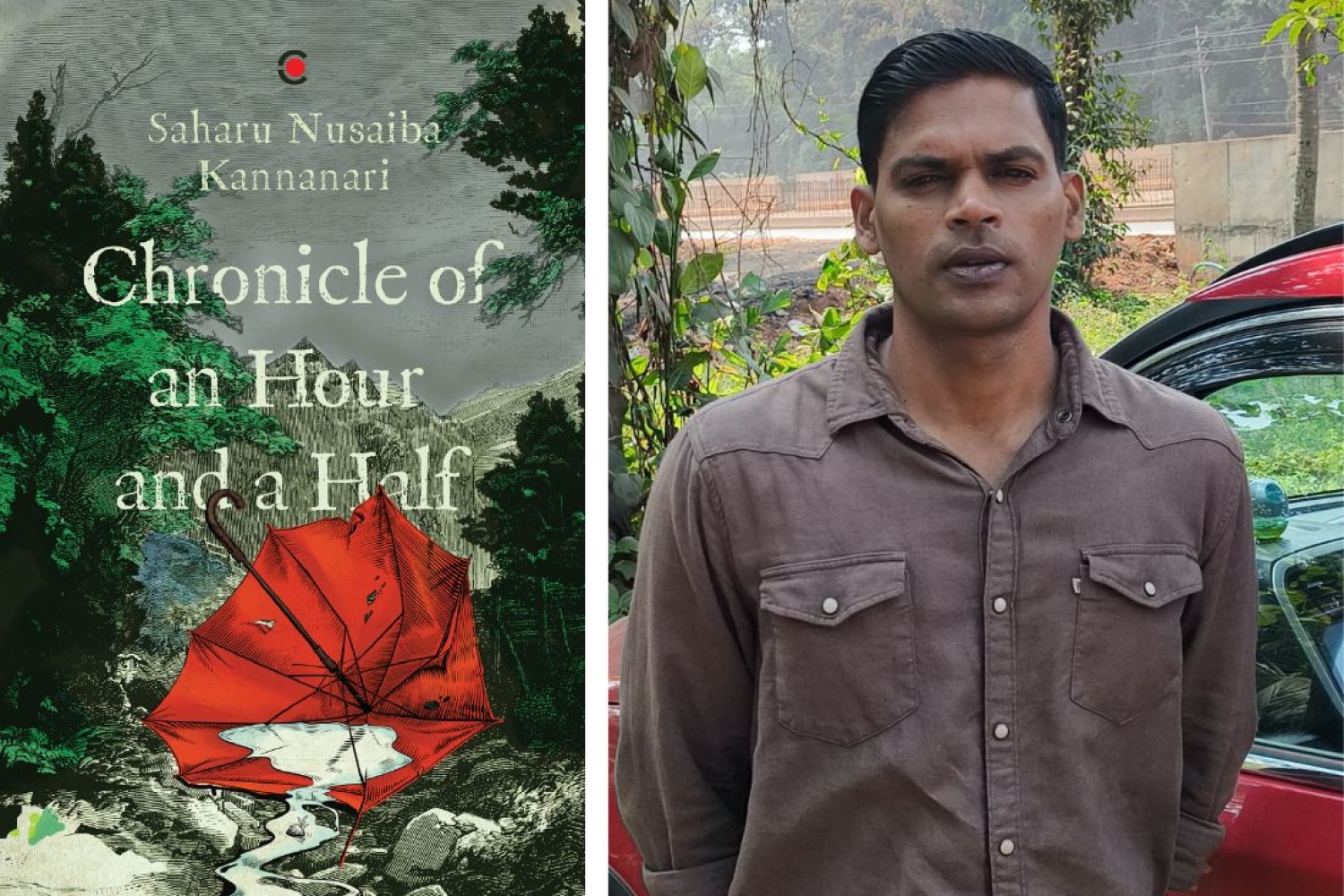

In an age where social media fabricates the truth for all of us, Saharu Nusaiba Kannanari paints the picture of mass hysteria in the fictional village of Vaiga placed in the Western Ghats. His debut novel, Chronicle of an Hour and a Half, explores the intricacies of how a rumour of an illicit affair takes life of its own through the WhatsApp community of the village. We talk to the author about the challenges of writing a debut, the spread of misinformation, and the impulse-driven effect of social media.
WRITING PROCESS
I wrote the novel some time ago and I wanted to write something quick because I was desperate to publish—a rumour quickly escalating into mass hysteria and mob lynching ought to have been an easy pick in contemporary India. In other words, I was just writing another novel. I wish I could give you a more thoughtful answer, but that would be disingenuous. I never think of the why when I set out to write anything. I don’t write under profound phil- osophical insight or inspiration or compulsion. I am only concerned with the what and the how. The goal is always to tell a believable story and tell it well, in sentences that make a reader appreciate the language in which it is writ- ten a little more. There is no liability like a bad book on your shelf and I try as hard as I can not to author one.
RUMOURS IN TODAY’S TIME
Rumours have always been going viral in human history. All of the blood libel stories around Jews killing Christian children and drinking their blood, from Hugh of Lincoln toSimon of Trent, were rumours gone viral. What is different today is the pace and scale. A dumb slip of the tongue three thousand miles away is a potential trigger for flash mobs elsewhere. I think it was Swift who started off what ended up as the popular maxim, The lie travels half the world before truth can pull its boots on. That joke is a literal truth now. Don Delillo said to Paris Review, ‘As technology advances in scope and complexity, fear becomes more primitive.’ When consumption and dissemination of news and information become the central pleasure and entertainment of society, we get there, and we are there, both in impulse and fear. We suffer from what American author Ted Mooney called ‘information sickness’.
CHALLENGES OF PENNING A DEBUT
I had written two and a half novels before and failed to land a publisher. So the challenges were not fresh. In fact, I had finished it rather quickly. Some reasons might be that there were fourteen or fifteen narrators, the plot was fast-moving and the novel was conceived to be short, all of which together perhaps denied me the space to ponder too much or tinker and some tinkering, I suppose, is an essential part of novel-writing, and time-consuming. In fact, the necessity of having to speak in a different voice every third or fifth page gave the writing both the necessary liberty and discipline to finish it quickly as I had hoped. One major challenge in terms of the craft was that it was raining relentlessly from the first page to the last and I was worried about sounding repetitive and boring in terms of descriptions and imagery. I, of course, wouldn’t have come up with the structure if I hadn’t read William Faulkner’s As I Lay Dying, which gave the novel one of its two epigraphs.
FRENZY OF SOCIAL MEDIA
Social media has made us more impulse-driven than we used to be as a species, more narcissistic and self-righteous and intolerant and impatient, sedentary and violent in equal measure. I remember Eric Hoffer’s observation in True Believer that human beings hate allies in love and seek company in hate. Social media has made the instinct for the latter quick and easy to realize. We all seem to be living our lives faster than we need to. Like a smoker cannot think about quitting without smoking, we seem to be too dependent on disconnecting the internet. We are what we eat, the culinary adage goes. I increasingly tend to think that we are what we consume and disseminate on the internet.
Words Paridhi Badgotri
Date 20.02.2024